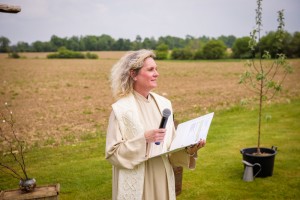Professional Consultation
Therapeutic Use of Self
For anyone engaged with clients
You do not need to be an artist to participate in this process
Reflections of the Self- an artistic expression of being
As a professional it is helpful to pause and reflect on your inner and outer self in order to nurture and protect your creativity. It is important to your well-being to assess your therapeutic use of self on an ongoing basis. Taking time to assess where you are in the present, what might be hidden and how you are experiencing your sense of self in life and in practice is an important element to be able to identify where you might be off balance.
To engage in a therapeutic use of self-reflective practice is to assess the self in a one hour weekly practice to provide a one-hour resting place weekly in order to engage in your creativity.
And then-
Once per month join me in a consultation/supervision experience for an in-depth and personal one-hour consultation/supervision and dialogue in an arts-based process to inspire your creative self as you have the opportunity to Reflect, Renew and Respond. Together we will explore your Therapeutic Use of Self in a reflective dialogue.
Process – Full-bodied Self-portrait drawing, Self-Reflection
Simple materials are required for this process.
- A blank journal 8.5 x 11, heavy weight quality or photocopy paper
- Markers or pencil crayons
- At the end of the workweek or after a day that stands out, for you to sit for 5 or so minutes to create a full-bodied self-portrait and then reflect on the resulting image for the remainder of the time allotted (rest of hour) in your journal
- One hour monthly conversation Online or via phone in reflection of the resulting images over a period of the month
Discussion with a colleague in consultation or supervision as witness, is more likely to lead to a positive outcome of exploration of underlying concerns of issues that is hard for each individual to unearth on their own. The process facilitates increased self-awareness, clarity of role and purpose, the opportunity to engage with the imagination, create solutions to ongoing issues as well as an opportunity to re-balance and engage in self-care.
The holding environment offers listening without judgement, while thinking aloud to reflect on worldview, values, beliefs, and identify personal and professional issues, as well as the recognition of areas of experiencing countertransference, critically examining professional use of self, and gaining in self-understanding.
Therapeutic use of self consists of intentional nonverbal behaviour and reactions reflected in transparent engagement.
Many therapists today feel they have little time for their artistic/creative selves. The frustration is rooted in the belief that artistic creativity can only be nourished and enjoyed when all of the professional responsibilities, tasks and challenges of business life have been met. Also that the creative spirit needs to be met in complicated and large creative tasks. Meanwhile there is an increase in ‘clinification’ and a longing for a union with creative spirit in the midst of endless distractions. The term ‘clinification’ is defined as “the increasing in the everyday clinical aspects of work while decreasing in creative expression”.
- What if your creative/artistic self and self-reflective practice of self-care could be integrated and inextricably woven into the fabric of everyday practice?
- How would it feel to be in connection with your creative inner child?
- What if you were inspired to look through the lens of imagination and gain in self-awareness and new insight?
- How different would your life and work be if you lived each work day as your authentic creative self to meet whatever your context and environment requires of you?
- What if you became the creative arts therapist of your multi-faceted life in a co-creative connection with your therapeutic use of self?
Ultimately, my doctoral work was a catalyst for a research journey to seek answers to seeming unending questions. Questions that arose from the realization that ‘clinification’ does take place after a period of time. Work seems to expand to fill the time each day while there is a slow decrease in artistic practice and a slow decease in self-care that starts to take place as well. I learned through my own experience and my doctoral research that it is important not to diminish self-care and artistic practice but to learn from them.
I discovered that self-care, self-reflection and artistic practice can be linked. Each self-portrait created was like a stepping stone on a pathway that can lead deeper and deeper into a forest of self-discovery revealing new insight and new vision.
Perhaps these concerns are nudging you as well.
- I need new eyes to see, a new lens to observe the true nature of a moment. How do I see myself, and what are the things that are causing me concern or standing in my path?
- What is necessary for maintenance of therapeutic use of self?
- How will I arrange my life and practice to experience engagement with the creative use of self?
- What practices do I require to nurture my work and enrich myself?
The self-portrait weekly reflective practice encourages the therapist to engage in and critically reflect on her or his therapeutic use of self with clients either in supervision or in consultation.
The more aware the practitioner is of her or his reactions the less likely it is that these will compromise relationship. Rather than ignore the self, the practitioner needs to be able to use his/herself to facilitate self-change through the use of transparency, genuineness and self-disclosure, as a means for recognizing the self of the practitioner.
The engagement between artwork and artist provides the opportunity for self-understanding and growth. The self-portrait can serve as a transitional object, encouraging the artist to confront and work through feelings he or she has about others, based on past disappointments and provides the opportunity for corrective emotional experience.
The process of the engagement with the creation and reflection on the full-bodied self-portrait can provide the practitioner with here and now disclosures of self-involvement and be self-revealing about the many selves of the individual.
Self-awareness plays a critical role in the appropriate use of self in the engagement with others.


